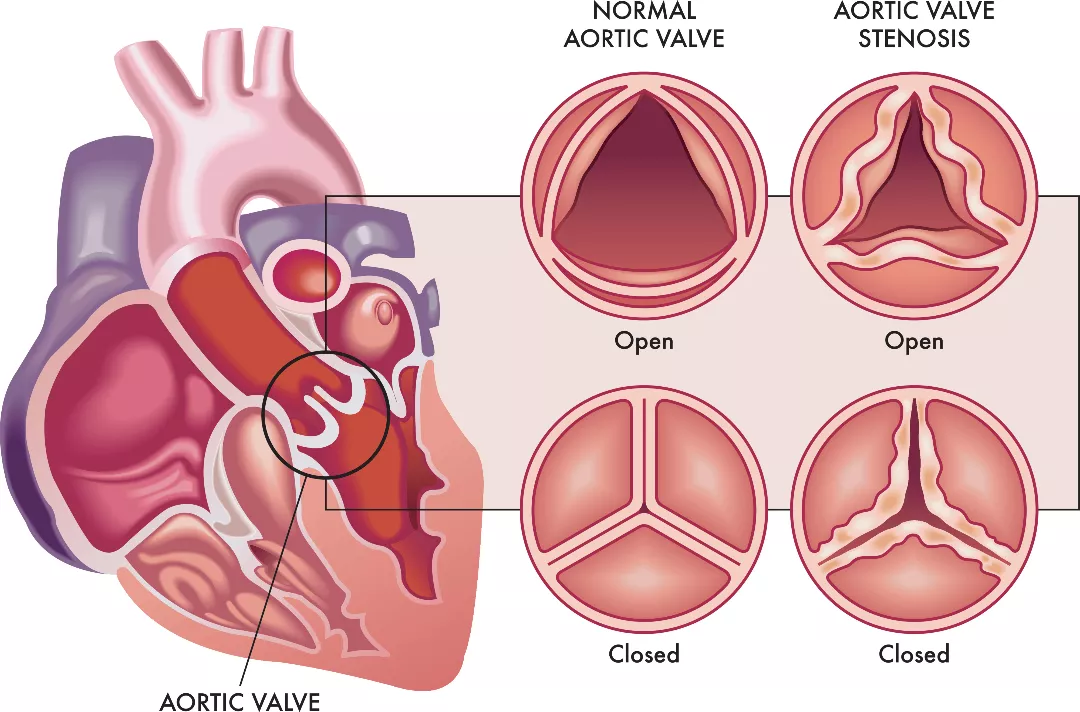Aortic valve stenosis (AS) is a condition that has garnered significant attention in the field of cardiology due to its impact on the aortic valve, one of the four valves in the heart. This condition involves the narrowing of the aortic valve, which can lead to serious cardiovascular complications if left untreated. Understanding whether aortic valve stenosis is considered heart disease necessitates a deep dive into its pathophysiology, diagnosis, management, and implications on overall heart health.
What Is Aortic Valve Stenosis?
Aortic valve stenosis is characterized by the narrowing of the orifice of the aortic valve, which results in restricted blood flow from the left ventricle into the aorta and onward to the rest of the body. This narrowing is typically caused by the buildup of calcium deposits on the aortic valve leaflets, though it can also arise from congenital defects or rheumatic fever.
The severity of AS can vary, ranging from mild to severe, and it is often a progressive disease that can deteriorate over time if not appropriately managed.
See Also: Signs of A Weak Heart Valvetic Valve
Pathophysiology of Aor Stenosis
The pathophysiology of AS is complex and involves both mechanical and cellular processes. As the aortic valve narrows, the heart must work harder to pump blood through the reduced opening, increasing the pressure within the left ventricle. Over time, this increased workload can lead to left ventricular hypertrophy (thickening of the heart muscle), which can impair the heart’s ability to function efficiently.
Furthermore, the restricted blood flow can also affect the dynamics of blood circulation, leading to changes in shear stress that can stimulate pathological remodeling of the valve and the myocardium. These changes can exacerbate the stenosis and contribute to a worsening of the condition.
Symptoms And Diagnosis of Aortic Valve Stenosis
The clinical presentation of AS can vary widely. In its early stages, the disease may be asymptomatic, but as the stenosis progresses, symptoms typically emerge. Common symptoms include:
Breathlessness or dyspnea, particularly during exertion
Angina (chest pain)
Dizziness or syncope (fainting spells)
Palpitations (abnormal heartbeats)
Diagnosing AS involves a combination of clinical evaluation and diagnostic testing. A key tool in diagnosing aortic valve stenosis is the echocardiogram, which uses ultrasound waves to create images of the heart and provides detailed information about the valve’s structure and function, as well as the blood flow through the heart. Other diagnostic tools may include:
Electrocardiogram (ECG) to assess heart rhythm
Cardiac MRI to provide detailed images of the heart’s structure
Cardiac catheterization to measure pressures within the heart and examine the arteries
see also: How Long Can You Live with Stiff Heart
Management And Treatment of Aortic Valve Stenosis
Management of AS depends largely on the severity of the condition and the presence of symptoms. For patients with mild or asymptomatic stenosis, regular monitoring and conservative management may be sufficient. However, for those with severe stenosis and significant symptoms, intervention is often necessary.
Treatment options include:
Surgical Aortic Valve Replacement (SAVR): Traditionally, SAVR has been the standard treatment for severe AS. This involves open-heart surgery to replace the diseased valve with a mechanical or biological prosthetic valve.
Transcatheter Aortic Valve Replacement (TAVR): This is a less invasive procedure than SAVR and is particularly beneficial for patients who are considered high-risk for open-heart surgery. TAVR involves inserting a new valve through a catheter inserted via the femoral artery or through a small incision in the chest.
In addition to these interventions, medical management may include medications to control symptoms and manage associated conditions such as hypertension, coronary artery disease, and heart failure.
Complications And Prognosis of Aortic Valve Stenosis
If untreated, severe AS can lead to serious complications, including:
- Heart failure
- Stroke
- Arrhythmias
- Cardiac arrest
The prognosis for individuals with AS varies and is heavily dependent on the timeliness and effectiveness of treatment.
With appropriate intervention, many patients can lead normal, active lives. However, untreated severe AS typically has a poor prognosis, with high risks of morbidity and mortality from cardiovascular complications.
Is Aortic Valve Stenosis Considered Heart Disease?
To address the main question: yes, aortic valve stenosis is indeed considered a form of heart disease. It specifically falls under the category of valvular heart disease, which involves dysfunction of one or more of the heart valves. AS affects the heart’s structure and function, leading to significant cardiovascular complications if not managed effectively. Like other forms of heart disease, AS requires careful medical assessment, ongoing management, and appropriate therapeutic interventions to mitigate its effects and improve patient outcomes.
Conclusion
Aortic valve stenosis is a significant and serious form of heart disease that affects millions of individuals worldwide. It is a progressive disease that can lead to debilitating and life-threatening complications if left untreated. Understanding its symptoms, management strategies, and the necessity for timely intervention is crucial for improving the quality of life for those affected by this condition. As research continues and treatment methodologies advance, there is hope for better outcomes and longer, healthier lives for patients with AS.


